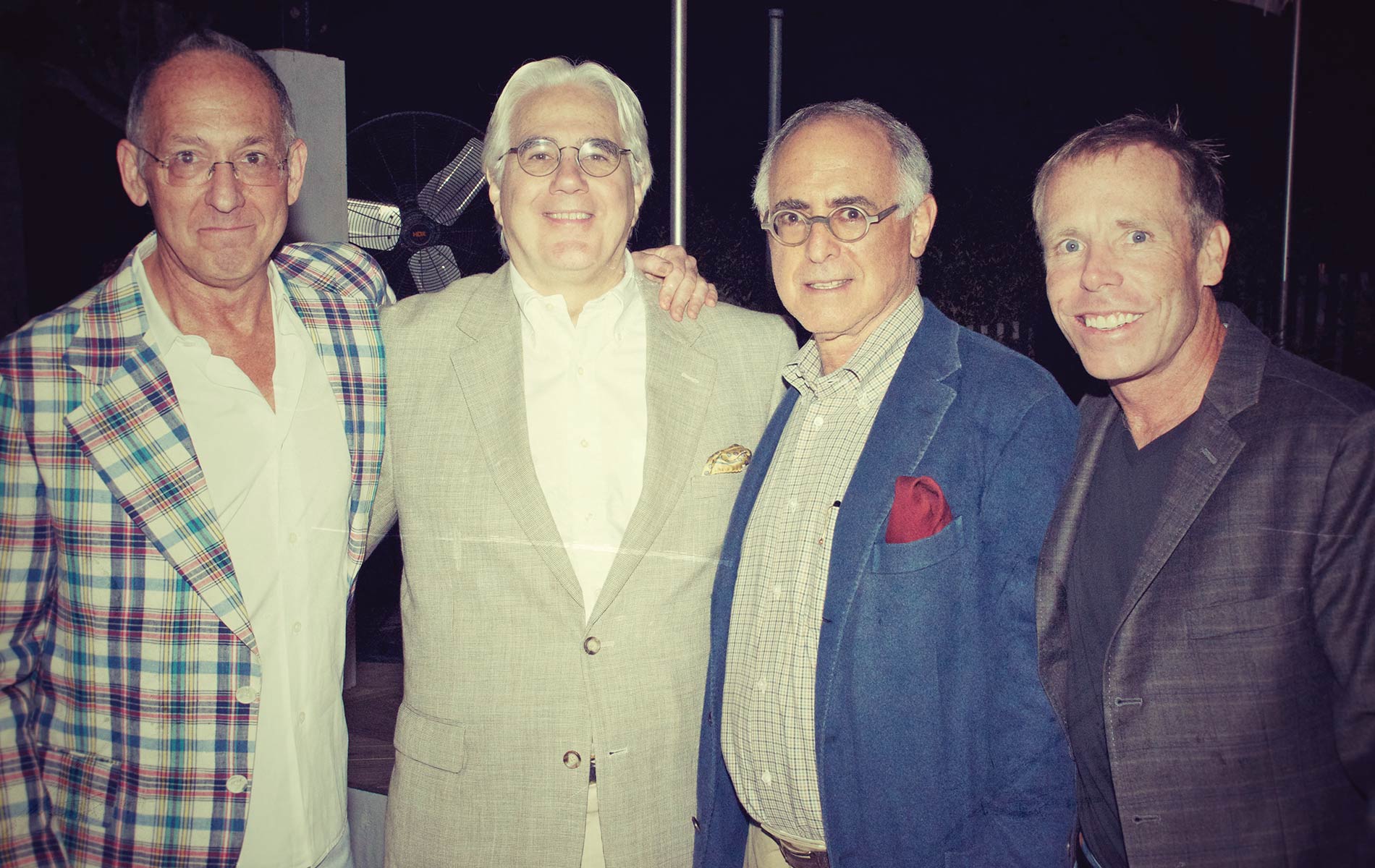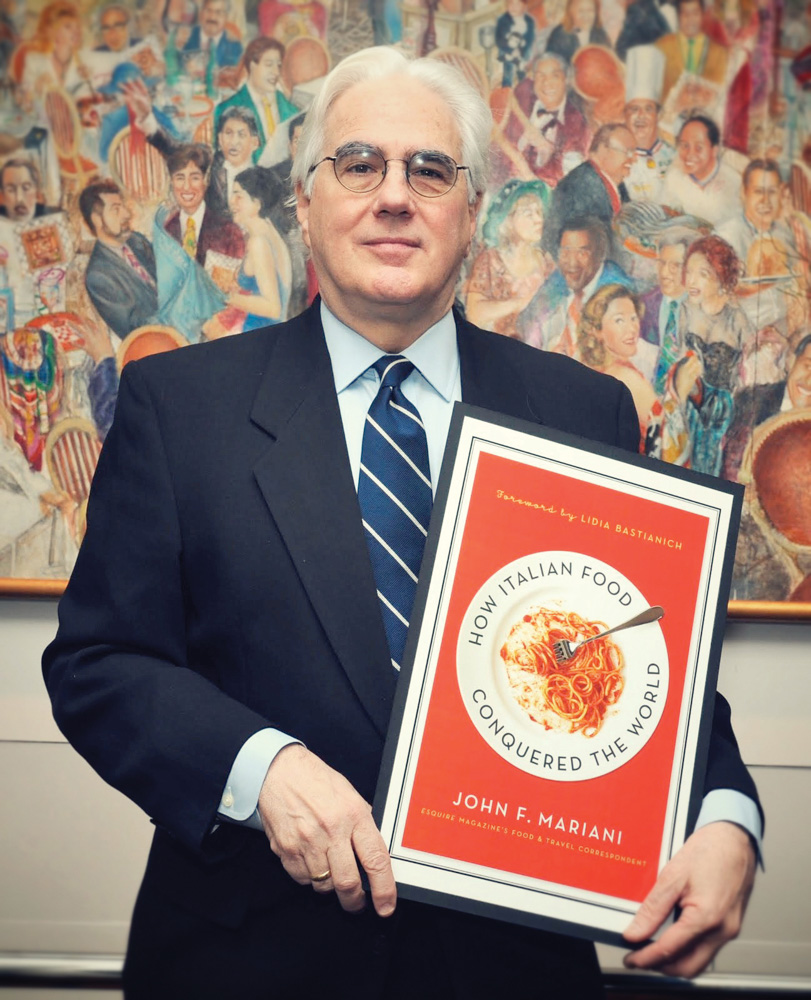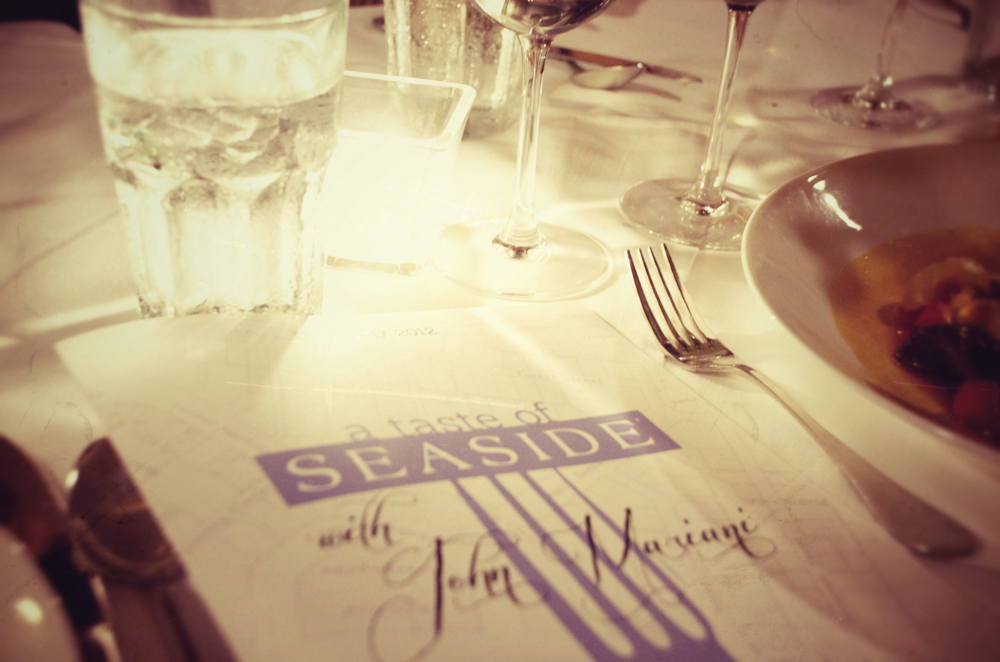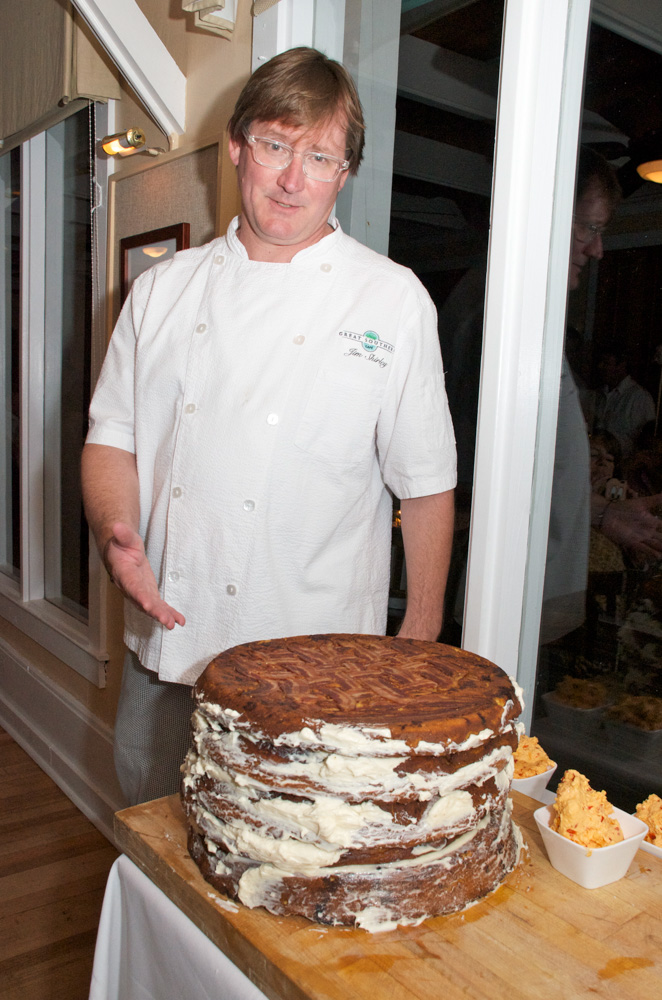
vie-magazine-john-mariani
A Culinary Life
One Man’s Quest
By Melanie A. Cissone | Photography by Gerald Burwell
His sometimes searing posts on topics that range from price gouging of bottled water by restaurants to his opinion of attire that is considered “acceptable” for dining out these days might lead a reader to conclude that Esquire magazine’s Eat Like a Man columnist John Mariani is a real curmudgeon. Not so. Author, food and wine critic, and journalistic observer of all things having to do with the culinary world and its history, John Francis Mariani is every bit as charming, thoughtful, and knowledgeable as he expects the epicureans and oenophiles who read his books and columns to be.
The author of twelve books about food, Mariani is not a chef turned critic but a lover of literature, history, and film who parlayed his passions into a writing career that has spanned some thirty-nine years. Most notably, Mariani wrote The Encyclopedia of American Food and Drink (Lebhar-Friedman) which, nearly thirty years after it was first published as The Dictionary of American Food and Drink, will be released in its fifth edition in late 2013 by Bloomsbury Publishing. With a PhD in literature from Columbia University, he has authored stories for some of the top general interest, travel, and food and wine magazines. These days he focuses specifically on writing for Esquire magazine, Bloomberg News, and his own newsletter, Virtual Gourmet.

Esquire columnist and acclaimed food writer John Mariani with the cover of his most recent book, How Italian Food Conquered the World
Photo Courtesy of John Mariani
DiscussingThe Italian-American Cookbook: A Feast of Food from a Great American Cooking Tradition (Harvard Common Press), which Mariani cowrote with his wife, Galina, draws him out personally. He says of the woman he married thirty-five years ago, “She is a very good cook and she prepared every recipe in the book.”
Of his courtship of the half-French, half-Russian woman whom he has described as “an exotic creature” who reminded him of Jean Seberg in Breathless, he said they connected over food. Together they worked their way through Julia Child’s Mastering the Art of French Cooking long before Nora Ephron’s screenplay adaptation of Child’s memoir and Julie Powell’s blog was made into the hit film Julie & Julia. Mariani tells a charming story of a bygone era when couples took long honeymoons: “After Galina and I got married, we traveled across the country, crisscrossing it for fourteen weeks. That was how we learned how to eat and how to cook.”
He continues, “The food was terrible in almost all the restaurants where we ate morning, noon, and night. It was frozen, overcooked, and lacking flavor, and nothing about it resembled fresh and local. Interest in food and the culinary arts for pleasure was burgeoning at that time in our country. We didn’t have a lot of money in the beginning, but we had a great apartment and willing neighbors. My wife and I cooked ethnic foods like Thai and Indian, and I began writing and sending articles to New York magazine, Town & Country, and Travel and Leisure.”
In addition to his books—three more are currently in negotiation—and magazine articles, Mariani has produced for the last twenty-eight years the Best New Restaurants of the Year for Esquire, where he is listed under the masthead as Food and Travel Correspondent—not a restaurant critic. He dines out all over the world—rarely incognito, which is standard for a formal newspaper restaurant reviewer—and says, “Restaurant owners and their senior staff know who the reviewers are anyway.”

A Taste of Seaside was hosted by Bud and Alley’s restaurant and benefited The Seaside Neighborhood School Garden
“The reason I do not go incognito is the same reason a reporter does not when researching a feature story,” says Mariani. “I want to speak to the chef, confer with him, and learn about his culinary views and especially about his region.”
It comes as no surprise that a literary man like Mariani portrays the food and wine in his reviews as just two of the characters of a grander story. He is three-time nominee for the James Beard Foundation Journalism Award who looks for and describes the richness of the whole dining experience. He talks to the chef and takes into account the design of a restaurant, the service, the prices, and the staff’s familiarity with what they serve as strong factors in what he writes. For Mariani to thoroughly enjoy dining out, the experience entails an ensemble cast so much so that some ten years ago he added a category to his Best-Of list: hostess.
But, when it comes to those go-to foods and people and places that are familiar and not demanding, Mariani drifts toward the sentimental. To him, few foods satisfy like a pizza and a beer or the memory of his mother’s hand-rolled gnocchi Bolognese. He points to his youth in the North Bronx and Mario’s Restaurant on Arthur Avenue. He says, “I just sink into that place.”
In his most recent publication, How Italian Food Conquered the World (Palgrave Macmillan), Mariani takes readers on an entertaining and thoroughly researched journey through the history of Italian food and its influence around the world today. In the introduction, he pays homage to his mother by recalling a time when he brought four friends home from college one evening.
Mariani adds, “It was never
called red sauce in our
house, always”—he pronounces
it in Italian—“marinara.”
He said, “My mother was in a mink stole, and she and my father, a podiatrist, were just about to go out for the evening.” Despite her son’s insistence that she not prepare anything for his friends, she donned her apron and began to make a spaghetti alla marinara sauce for five—from scratch. Mariani adds, “It was never called red sauce in our house, always”—he pronounces it in Italian—“marinara.”
The details of the book are inviting and the modern history unfolds like a novel that begins in the late nineteenth century, when the scale of Italian immigration to the United States was unprecedented. He writes, “Between 1880 and 1920, one out of every four U.S. immigrants was Sicilian.” He continues, “… 97 percent of the Italians came through Ellis Island …”
The book describes individual foods that are easily recognizable now as Italian. According to Mariani, pizza was a favorite street food that Neapolitan immigrants brought to the U.S. He writes, “… they ate [pizza] with crust folded over as a kind of sandwich or snack.” The first pizzeria opened in the U.S. in 1905. Lombardi’s was located on Spring Street in the Little Italy section of New York. Even as late as 1939, though, most Americans had not yet heard of pizza, and it did not really gain popularity as an inexpensive fast food until after World War II.
Mariani gives equal time in his book to the evolution of olive oils and Italian wines and recalls a time when one of the only wines available to early adopters of Italian-American cuisine was sweet, fizzy Lambrusco. He takes a jab at one of the derogatory terms used to describe Italian immigrants and their food when he titles a chapter about wine “From Dago Red to Super Tuscan.” Today, Italian wines are ranked among the best in the world by leading wine experts.
In a most conclusive manner about the way in which Italian food, wine, and restaurants have influenced the world’s culinary landscape, Mariani says, “The most popular restaurants in London, Berlin, and Tokyo, just to name a few cities, are Italian.” He says, “The Times of India in Mumbai wrote, ‘Nobody is opening up French restaurants here.’” It is clear to him that Italian food and trattorias have overtaken French and other world cuisines in popularity.
Mariani has dreamt about but never really wanted to open his own restaurant. When he thinks about that really wonderful feeling that a delicious meal, good wine, and fine conversation deliver, his wife, two sons (both of whom are in the food business), and their girlfriends are always at that table. On reflection, he would add to the mix some of his favorite writers and film directors. He says, “I think I would get along with Gore Vidal, H. G. Wells, H. L. Mencken, Frank Capra, and John Ford.”
Mariani muses aloud, “I would have liked to talk to Capra about the dance scene in the pool in It’s a Wonderful Life. I would ask John Ford if it was his idea or John Wayne’s idea in the final scene in The Searchers for Wayne to hold his right elbow with his left hand.” If this was some sort of tribute to Western film star Harry Carey, Mariani wants to know whose idea it was.

Chef Jim Shirley with his layered butter and bacon cornbread masterpiece at A Taste of Seaside
John Mariani was the guest speaker at the first of what Seaside is planning as a regular event: A Taste of Seaside. Last October’s “Taste of” with Mariani was held for the benefit of the Seaside Neighborhood School Garden (SNSG). The first school garden, planted in 2007, could be found on Tupelo Street at the home of town founders, Robert and Daryl Davis. Having known restaurateur Alice Waters of Chez Panisse fame and being thoroughly aware of the success Waters was having with the Edible Schoolyard Project she founded, the Davises were enthusiastic about having an organic school garden in Seaside. They offered their grounds to get it started. The garden has grown into a regular part of the sixth grade curriculum and, when space became available, the garden moved to its current location behind the western buildings of Central Square on Quincy Circle.
Interim school principal Kim Mixson described some of what the sixth grade garden curriculum entails. She said, “Each garden class is comprised of about ten of the thirty-nine sixth grade students in school and the class runs for nine weeks. It culminates in a student-led garden tour. Students are graded on their ability to convey such information as what they’ve planted, why certain plants are chosen as companions to others, and how they manage the care of the garden.”
Mixson continued, “We’ve had some wonderful guest speakers, including Emeril Lagasse, to speak to students about gardening, the food they are growing from seeds, and how their fruits and vegetables compare in taste to big-crop grocery store produce. The garden is a great classroom.” She concluded, “Seaside really helps support the school and we are so pleased that the garden was selected as the beneficiary of A Taste of Seaside.”
The eating establishments that donated food to last October’s A Taste of Seaside included Amavida Coffee and Tea, Barefoot BBQ, Bud & Alley’s, Great Southern Café, Heavenly Shortcakes, Raw and Juicy, and the Shrimp Shack. Guests enjoyed, among other delicious samplings, pulled pork sliders and champagne at the welcoming reception in Bud & Alley’s herb garden while John Mariani mingled with the crowd and later spoke about being in Seaside for the second time. The first was nine years ago when he did a review of Bud & Ally’s for his newsletter.
Guests retired to long tables in two different rooms at Bud & Alley’s where they were served a three-course meal with family-style side dishes and braided bacon cornbread that, before it was sliced, looked like a giant layer cake.
— V —
Share This Story!
KEEP UP WITH THE LATEST STORIES FROM VIE
















































































































































